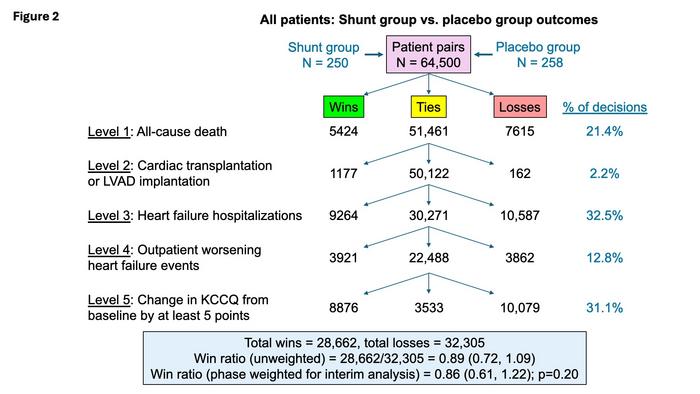The advances and promise of continuous glucose monitoring in diabetes management
As adoption of Continuous Glucose Monitoring (CGM) continues to increase, there is a growing body of evidence supporting the use of this technology in improving diabetes outcomes for patients with Type 1 or Type 2 Diabetes. A new supplement in the peer-reviewed journal Diabetes Technology & Therapeutics (DTT) provides an excellent perspective of the past, present, […]

As adoption of Continuous Glucose Monitoring (CGM) continues to increase, there is a growing body of evidence supporting the use of this technology in improving diabetes outcomes for patients with Type 1 or Type 2 Diabetes. A new supplement in the peer-reviewed journal Diabetes Technology & Therapeutics (DTT) provides an excellent perspective of the past, present, and future of CGM. Click here to read the supplement now.

Credit: Nary Ann Liebert Inc., publishers
As adoption of Continuous Glucose Monitoring (CGM) continues to increase, there is a growing body of evidence supporting the use of this technology in improving diabetes outcomes for patients with Type 1 or Type 2 Diabetes. A new supplement in the peer-reviewed journal Diabetes Technology & Therapeutics (DTT) provides an excellent perspective of the past, present, and future of CGM. Click here to read the supplement now.
In the supplement Rickson et al. review the rapid pace in which diabetes technology has progressed and the implications for relying on rigorous and extensive timelines to publish randomized controlled trials to impact provider awareness, clinical practice guidelines and insurance coverage. They propose alternative approaches to assessing the safety and efficacy of CGMs.
Gavin and Bailey review findings from recent real-world studies, highlighting the obstacles to access CGM and other technologies. They provide an update on current real-world observational prospective studies that demonstrate the clinical efficacy and economic impact of CGM within various diabetes populations in real-world settings.
Munshi et al. demonstrated that older adults with Type 1 diabetes (T1D) who use newer diabetes-related technologies such as CGM had better glycemic control, lower hypoglycemia risk, and fewer glycemic excursions. In the supplement, Munshi reviews the unique needs of older adults with diabetes and provides recommendations for how different types of CGM systems can be used strategically to improve patient care.
Miller and Polonsky discuss the benefits and feasibility of utilizing CGM to encourage lifestyle changes in individuals with prediabetes to prevent their progression to Type 2 diabetes (T2D).
“Our predictions are that CGM will pretty much replace SMBG [self-monitoring of blood glucose] for insulin-requiring patients with diabetes, assuming cost is not a barrier,” states Satish Garg, MD, Editor-in-Chief of Diabetes Technology & Therapeutics, and Professor, University of Colorado Denver, Barbara Davis Center for Diabetes. “CGM will also become the standard for managing T2D, irrespective of the treatment regimen, and the potential of detecting prediabetes (both T1D and T2D) at an early stage so that necessary management can be implemented early.”
This supplement was produced through an unrestricted educational grant from Abbott’s diabetes care business.
About the Journal
Diabetes Technology & Therapeutics (DTT) is a monthly peer-reviewed journal that covers new technology and new products for the treatment, monitoring, diagnosis, and prevention of diabetes and its complications. Led by Editor-in-Chief Satish Garg, MD, University of Colorado Denver, Barbara Davis Center for Childhood Diabetes, the Journal covers breakthrough technologies and new therapeutic drug classes, behavioral aspects and approaches to diabetes care, and the latest advancements and applications of new and emerging technologies including continuous glucose monitoring, alternate insulin delivery methods, artificial pancreas, telemedicine and computerized case management, new insulins with ultra-rapid onset of action, and detection and prevention of hypoglycemia. Tables of contents and a free sample issue may be viewed on the Diabetes Technology & Therapeutics (DTT) website. DTT is the official journal of the International Conference on Advanced Technologies & Treatments for Diabetes (ATTD).
About the Publisher
Mary Ann Liebert, Inc. is a global media company dedicated to creating, curating, and delivering impactful peer-reviewed research and authoritative content services to advance the fields of biotechnology and the life sciences, specialized clinical medicine, and public health and policy. For complete information, please visit the Mary Ann Liebert, Inc. website.
Journal
Diabetes Technology & Therapeutics
DOI
10.1089/dia.2023.0041
Method of Research
Case study
Subject of Research
People
Article Title
Past, Present, and Future of Continuous Glucose Monitors
Article Publication Date
26-May-2023
What's Your Reaction?

































